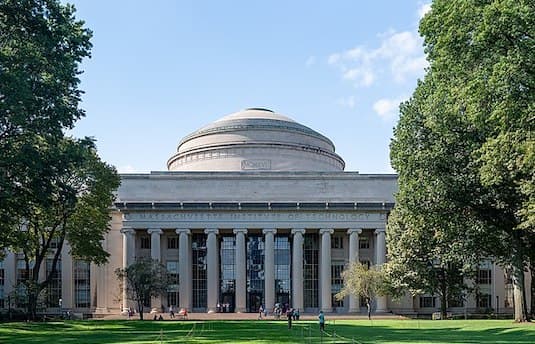MIT’s Testing Truth Bomb
The arguments by the school’s dean of admissions and student financial services fully justify MIT’s decision, and they deserve careful consideration at other colleges.

While many colleges are going “test-optional” — or even “test-blind,” refusing even to consider ACT or SAT scores — the Massachusetts Institute of Technology is breasting the tide. After suspending testing requirements during the pandemic, the school just announced that standardized tests would be mandatory again.
It did so with a careful, citation-rich blog post from Stu Schmill, the school’s dean of admissions and student financial services. Mr. Schmill’s arguments fully justify MIT’s decision, and they deserve careful consideration at the colleges rushing to abandon testing too.
Why does a school like MIT use standardized tests as part of its admissions process? One reason is that the tests work. They predict how well students do in college — and this predictive value remains after accounting for students’ high-school average grades and, among other things, socioeconomic status.
Dean Schmill reports that this is the case at MIT based on the school’s internal research, but studies at other schools have found the same thing. The more demanding a school is, the more important it is for the school not to let in students who lack the ability and skills needed to succeed.
MIT requires all students to take fast-moving calculus classes. It does no one any favors to admit students to a school like MIT if they aren’t ready to learn calculus. Standardized tests are also, well, standardized: They measure all students on the same scale.
The same GPA can mean different things depending on what high school a student attended and which teachers he had. Different students also have access to different extracurriculars and advanced placement courses, as well as teachers that may be more or less skilled at writing letters of recommendation.
A similar access problem obtains for tests that are less common than the ACT or SAT, which virtually all students can take if they want. The major tests provide a way for every student to demonstrate mastery of important material, even if they lack opportunities at school, and even if they don’t have highly educated parents.
In that way, standardized tests can be an equalizing force, a way for brilliant students from modest backgrounds to break into the elite.
It might be said that standardized tests are the worst way to pick students to admit to college, except for all the others. Precisely because they accurately measure students’ academic skills, these tests do reflect the economic and racial gaps that are evident in our society.
Mr. Schmill fails to directly take on the allegation that the tests are racially biased, but there’s little good evidence of this: If a test is biased against a minority group, it should underpredict the group’s performance in college, but this is not the case. Because test scores come in the form of hard numbers, any weight given to test scores restricts schools’ ability to base admissions on more subjective factors, including racial and economic preferences.
While removing tests from the admissions process can give schools more leeway to prefer poor students or racial minorities, it doesn’t have to. Admissions officials can be biased in either direction; some might seek out students who remind them of themselves, or be bowled over by applicants from elite high schools.
And if officials rely more heavily on other measures of merit, rather than simply admitting students from preferred groups, they will find that, say, personal essays and grades are also correlated with ethnicity and social class.
The better option is to expand access to tests. In his blog post, Mr. Schmill notes research showing that when schools have all students take the SAT or ACT during school hours — rather than the tests being a voluntary activity for students who’ve mostly decided they want to go to college — this leads to the discovery of thousands of highly talented students who otherwise would have gone unnoticed.
Improvements to kindergarten through twelfth grade education could also boost the number of students ready for schools like MIT, though this opportunity has passed by the time kids are applying to college.
The whole point of a selective admissions process is to admit the best students while rejecting the rest. This process can never result in equality of outcome. Such a process can, however, use the most accurate measures available to pick students, and give students equal opportunity to excel. Such a process should include standardized tests, and high schools should get as many students to take the tests as possible.
Mr. VerBruggen is a fellow of the Manhattan Institute.

